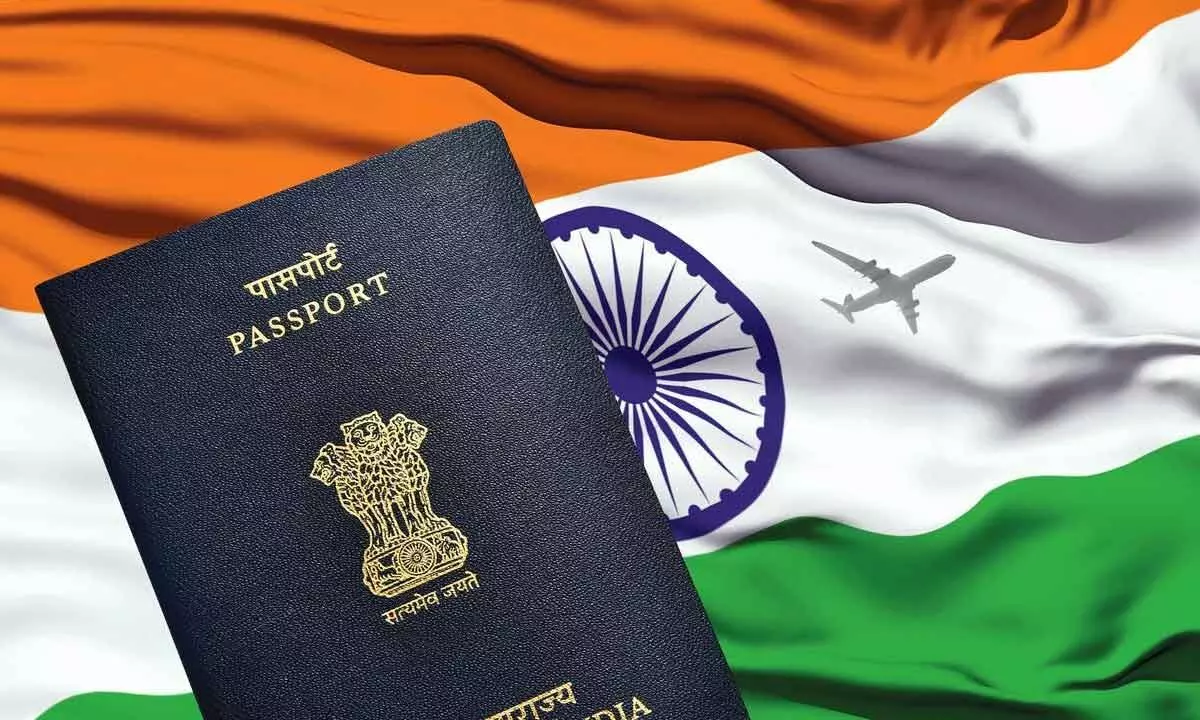Visa-free travel becoming more popular, surge in on-arrival options, says UN
There is a noticeable opening in Asia and the Pacific compared to other global regions
image for illustrative purpose

In the latest Henley Passport Index 2024, the Indian passport issuance has climbed to secure the 81st rank, up from 84th in 2023, giving its holders access to 61 countries, making globe-trotting more convenient than ever
The latest UN Tourism report states that visa-free travel has increased globally, with 21% of the world population not requiring any form of visa, up from 17% in 2008 and 20% in 2018. Additionally, 14% of the world population can now apply for visas on arrival, compared to 6% in 2008 and 15% in 2018.
As the report shows, there has been a marked decline in traditional visa applications globally, with the proportion of people applying for traditional visas falling from 77 percent in 2008 to 59 percent in 2018 and further to 47 percent in 2023.
It sheds light on the evolving landscape of travel facilitation. It includes the Tourism Visa Openness Index, which measures the degree to which destinations facilitate tourism and how open a country is regarding visa facilitation for tourism purposes. Also, mobility scores are included to indicate the extent to which citizens worldwide are subject to visa policies, as well as an in-depth analysis of the reciprocity of visa policies - UN tourism.
Regionally, the report disclosed the key trends regarding tourism visa regulations. It points out that there is a noticeable opening in Asia and the Pacific compared to other global regions.
Meanwhile, sub-regions such as Southeast Asia, East Africa, and the Caribbean display a welcoming trend, distinguishing them as particularly welcoming.
Regions, including East Africa, South Asia, Southeast Asia, and West Africa, often implement visa-on-arrival policies, simplifying entry procedures for travellers. Traditional visa applications in the Middle East have declined significantly, falling from 71 percent of the global population in 2015 to 57 percent in 2023.
The report underscores the pivotal role of visa policy improvements in fostering tourism growth. Key recommendations include increased integration of tourism perspectives into visa strategies, targeted visa-exemption programs for low-risk traveler markets and expanded visa on arrival facilities. In addition, clear communication on visa policies is vital, along with a streamlined visa application process, accelerated processing times and optimized entry procedures for an enhanced visitor experience.
The increasing availability of visas on arrival for Indians has made travelling to international destinations more accessible for Indian passport holders in 2024. In the latest Henley Passport Index 2024, the Indian passport issuance has climbed to secure the 81st rank, up from 84th in 2023, giving its holders access to 61 countries, making globe-trotting more convenient than ever. There are even many countries that allow you to forego the complexities of visa applications and complete essential paperwork upon arrival.
According to the first UNWTO World Tourism Barometer of the year, international tourism ended 2023 at 88% of pre-pandemic levels, with an estimated 1.3 billion international arrivals. The unleashing of remaining pent-up demand, increased air connectivity, and a stronger recovery of Asian markets and destinations, are expected to underpin a full recovery by the end of 2024.
UNWTO Secretary-General ZurabPololikashvili says: "The latest UNWTO data underscores tourism's resilience and rapid recovery, with pre-pandemic numbers expected by the end of 2024. The rebound is already having a significant impact on economies, jobs, growth and opportunities for communities everywhere. These numbers also recall the critical task of progressing sustainability and inclusion in tourism development"
International tourism receipts reached $1.4 trillion in 2023 and according to preliminary estimates, about 93% of the $1.5 trillion earned by destinations in 2019.
Total export revenues from tourism (including passenger transport) are estimated at $1.6 trillion in 2023, almost 95% of the $1.7 trillion recorded in 2019.
Preliminary estimates on the economic contribution of tourism, measured in tourism direct gross domestic product (TDGDP) point to $3.3 trillion in 2023, or 3% of global GDP. This indicates a recovery of pre-pandemic TDGDP driven by strong domestic and international tourism.
Several destinations reported strong growth in international tourism receipts during the first ten to twelve months of 2023, exceeding in some cases growth in arrivals. Strong demand for outbound travel was also reported by several large source markets this period, with many exceeding 2019 levels.
International tourism is expected to fully recover pre-pandemic levels this year, with initial estimates pointing to 2% growth above 2019 levels. This central forecast by UNWTO remains subject to the pace of recovery in Asia and to the evolution of existing economic and geopolitical downside risks.
Economic and geopolitical headwinds continue to pose significant challenges to the sustained recovery of international tourism and confidence levels. Persisting inflation, high interest rates, volatile oil prices and disruptions to trade can continue to impact transport and accommodations costs in 2024.

